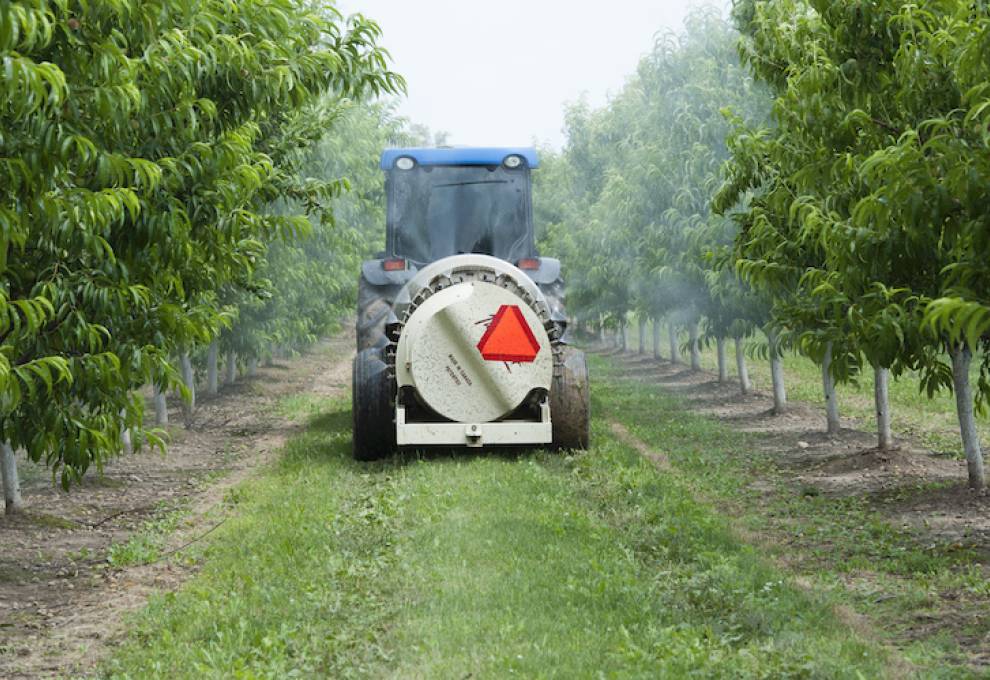
Despite the ongoing challenges with COVID-19, the Crop Protection Section is pleased to report progress on several initiatives in the past year. Specific challenges remain in certain areas which the Ontario Fruit and Vegetable Growers’ Association (OFVGA) will continue to advocate for in 2021.
Ending duplicate pesticide classification in Ontario
The OFVGA commends the Ontario government for ending the duplicate pesticide classification process. As of May 1, 2020, crop protection products in Ontario are now classified according to the federal system, bringing Ontario in line with other provinces. This eliminated a historic bottleneck in accessing new crop protection products in the province.
Modernized PMRA re-evaluation program
Many challenges with the Pest Management Regulatory Agency (PMRA) re-evaluation program have been experienced by both growers and PMRA themselves in the past few years with both parties indicating the current system is not sustainable. After a thorough process to evaluate the program, the PMRA has proposed a new model for re-evaluation called the integrated approach.
Several changes in the new proposed approach should provide for more predictable outcomes, enhanced stakeholder engagement, and improved empirical data for risk assessments, including refined grower use information. It is expected this new approach will be implemented over the next few years and should lead to the re-evaluation program being less disruptive for growers.
Clarification of end use dates on amended products
As a result of re-evaluation decisions, the use of some products may be cancelled or modified (amended). After an extended period of uncertainty, the PMRA has clarified the transition period for products requiring label amendments following a re-evaluation decision. It was previously uncertain when these label changes take effect for growers.
What has been clear is that growers have three years from the date of a PMRA final decision to the last use date on farm if all uses of a product have been cancelled. However, when a product needs to be amended (i.e. some label changes but product is not cancelled), phase-out dates were not previously clear. The PMRA now clarifies that users will also have a two-year transition period from the date of the final decision to transition to using newly amended labels, which will be available on the Public Registry. This provides clarity for growers on the effective date for changes to product use information prior to application.
Busy year of re-evaluations
The past year saw another round of key final re-evaluation decisions from PMRA. While some uses were unfortunately lost, several active ingredients that were previously proposed for complete cancellation ultimately retained continued use on some crops including mancozeb (Manzate), phosmet (Imidan), and linuron (Lorox). This was undoubtedly a result of significant efforts and collaboration by growers, grower organizations, and registrants to update and refine the information used in the risk assessments. These active ingredients would have been cancelled if not for these initiatives and lessons have been learned that we can apply to future re-evaluations.
Final decisions were also issued for thiophanate-methyl (Senator), ethephon (Ethrel), acephate (Orthene), dimethomorph (Forum/Zampro), and folpet (Folpan) that allowed for continued use on some crops with label amendments required. Finally, despite the best efforts of growers and registrants, all uses of chlorpyrifos (Lorsban) and dichlorvos (DDVP) have been cancelled. This will leave a significant gap in management programs for some crops.
Minor Use Program limitations
The Minor Use Pesticides Program (MUPP) of the Pest Management Centre (PMC) is an important source of data for new crop protection registrations for horticulture crops. Many of these registrations would not otherwise occur without the help of PMC as the market size is too small to justify the registration costs for these crops. In recent years, PMC has generally conducted about 37 projects annually to generate efficacy and/or crop residue data in support of new registrations.
Due to restrictions as a result of COVID-19, the PMC was only able to conduct about 40 per cent of the required trial work in 2020. The remaining trials were postponed to 2021, causing the capacity of the program to take in new projects to decrease significantly.
Only 10 new projects were selected at the 2020 Minor Use Priority Setting Workshop instead of the usual 37 because of the backlog of trial work. With restrictions possibly remaining in place in 2021, trial capacity may be further reduced this upcoming season, resulting in another year of limited space for new projects. The PMC will provide an update prior to the 2021 workshop regarding capacity for new trial work for the 2022 field season. In any case, the cascading effect has resulted in reduced new registration capacity that may last several years.
Ontario Minor Use Coordinator position
A key part of the MUPP is the role of the Provincial Minor Use Coordinator, a position held by Jim Chaput in Ontario since 2000 and from the inception of the PMC and the MUPP. His minor use work has resulted in hundreds of new crop protection registrations in edible horticulture over the past 20 years and improved the crop protection toolbox for all of OFVGA’s members. His work has benefitted growers not only in Ontario but across Canada, and not only towards economic success in our sector, but also in promoting domestic food security in Canada.
Jim will be retiring from his role in June 2021, leaving behind a knowledge gap within the minor use system. Fortunately, the OFVGA successfully advocated for a successor to be hired prior to his retirement for knowledge transfer and training. It is expected that a new hire will begin in early 2021.
What to expect for 2021
Collecting crop protection use information has been recognized as a key gap in our industry in providing updated data to support regulatory decisions. The OFVGA conducted a scoping exercise in 2020 which identified some promising data sources among some Ontario crops. It was determined that there are some current high-quality data sources that can be accessed, particularly among processing crops, but also some fresh commodities. The OFVGA, along with Canadian Horticultural Council (CHC) now intend to have follow up discussions with PMRA to refine more precisely when and how use data will be requested from industry.
Several more important final re-evaluation decisions are expected in 2021 including on neonicotinoids, lambda-cyhalothrin (Matador), and naled (Dibrom). While initial decisions related to pollinators have already imposed restrictions on some neonicotinoids, the upcoming decisions could add more restrictions to other crops and on seed and in-furrow uses which are important in several crops. The OFVGA will be paying close attention to these publications.
Collaboration
The OFVGA collaborates with numerous organizations in order to advocate for crop protection on behalf of edible horticulture in Ontario. We wish to thank our member organizations -- CHC, PMRA, Agriculture and Agri-Food Canada, Ontario Ministry of Agriculture, Food & Rural Affairs, and CropLife Canada -- who continue to work towards making crop protection in Canada better for growers and ensure safe and abundant food for consumers.

Add new comment